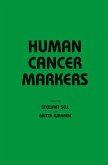Cancer has become the most critical health problem in the United States. It is expected that 25% of the people will develop this dread disease, and many of these will die from the malady. The causes of cancer are varied, but the best estimate available is that 70--90% arise from environmental factors. These statistics have triggered widespread governmental action along two lines: (l) An effort to identify those chemicals and conditions that give rise to malignant processes has been mounted by the Carcino genesis Testing Program, the National Cancer Program, and subse quently, the National Toxicology Program. (2) Regulatory laws have been enacted that are administered by agencies such as TSCA, FIFRA, EPA, FDA, OSHA, and so on, whose mission is to minimize public ex posure to carcinogens. Since direct verification that specific chemicals induce cancer in hu of unanticipated expo mans is necessarily limited to known incidences sure and is therefore rare, most chemicals are identified as carcinogens only by laboratory experiments. At present, the only accepted procedure is long-term animal bioassay, and not only are these studies expensive and time-consuming, but current worldwide resources permit the evalua tion of only 300-400 chemicals per year, a miniscule amount compared to what is available in the commercial world: 30,000 existing chemicals, with approximately 700 new such materials being introduced every year.








